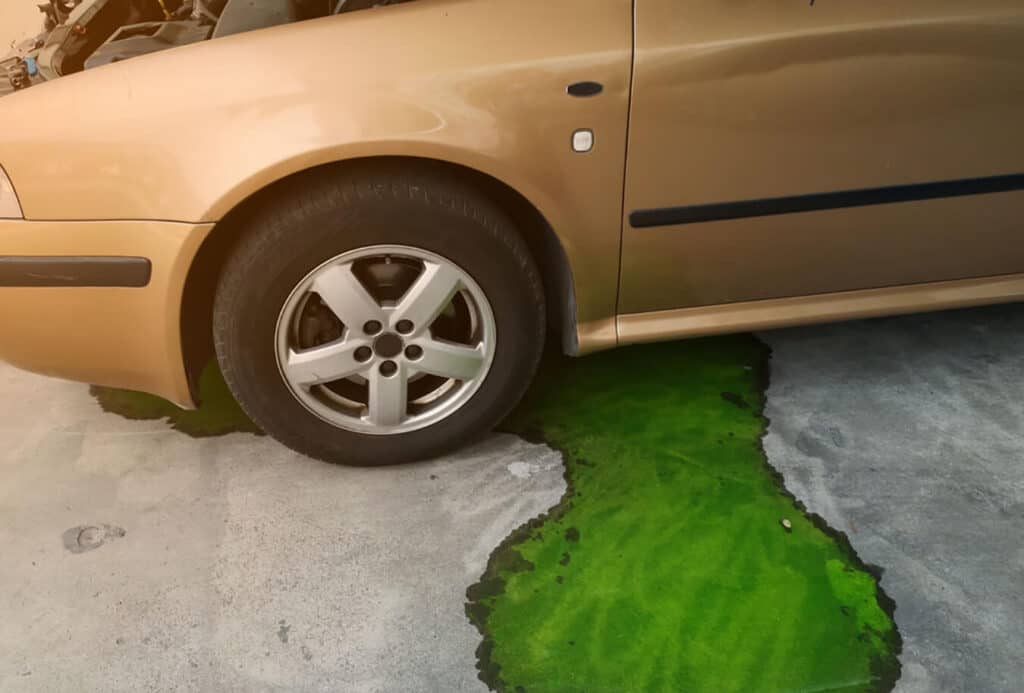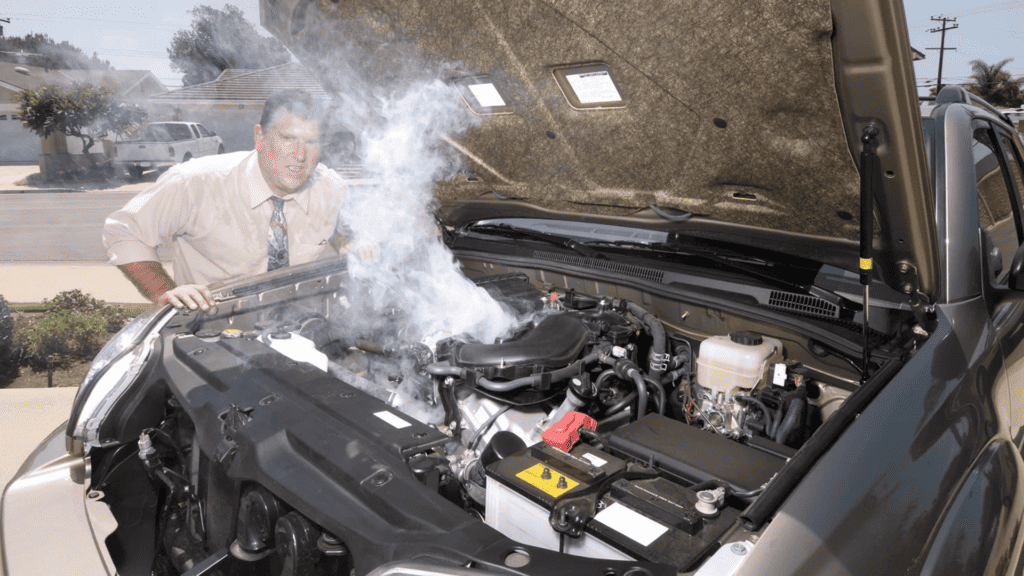Introduction: The Engine’s Cooling Guardian and What Happens When It’s Compromised
Your car’s radiator is the unsung hero of the engine bay, working tirelessly to keep your engine from overheating. When this guardian of cool starts to fail, it’s like pulling a thread on a sweater: things can unravel fast. From causing minor inconveniences to serious engine damage, a bad radiator can open the floodgates to a slew of costly issues.
A Bad Radiator: How Long Can You Really Go?
A bad radiator is a ticking time bomb, and the clock starts the moment you notice signs of failure. The lifespan of a deteriorating radiator varies significantly based on several factors, such as the extent of the damage and the overall condition of your vehicle. For those dealing with minor leaks or slight overheating, it might be tempting to think you can make it just a little longer. While it’s true that some people do manage to push their luck for a few days or even weeks, this is the automotive equivalent of playing Russian roulette.
Driving short distances with a failing radiator might give you a false sense of security, but don’t be fooled. Each trip, no matter how brief, puts added stress on your engine. Even if you’re just going to the grocery store, every kilometer counts when it comes to wear and tear. The term “catastrophic failure” isn’t used lightly; it describes a scenario where your engine could essentially melt from overheating, leading to repairs that can cost thousands of dollars. So when you weigh the risks and potential expenses, it becomes crystal clear that driving with a bad radiator is a game you don’t want to play.

Coolant Crisis: Is an Empty or Leaking Radiator an Emergency?
Imagine you’re cruising down the highway, and you notice your car’s temperature gauge creeping into the red zone. “Can I drive just a little further?” you might wonder. The answer is a categorical “No!” When your radiator is leaking or empty, driving even a short distance can cause irreparable damage to your engine. The cooling system relies on coolant to maintain the engine’s temperature, and without it, overheating is imminent.
But the dangers of a leaking or empty radiator go beyond simple overheating. The coolant in your car serves multiple purposes—it doesn’t just keep the engine cool but also acts as an anti-corrosive and lubricating agent for moving parts within the cooling system. Even a small leak can undermine these vital functions, making it crucial to address any radiator issue immediately. Underestimating a leak or empty radiator is akin to playing Russian roulette with your vehicle’s wellbeing and your own safety.
Warning Light Woes: Repairs and Costs You Should Know About
When the radiator warning light illuminates, consider it a red flag. In any case, these signals should not be ignored:
• Red Flag Alert: When your radiator warning light comes on, it’s not something you can afford to ignore. Think of this light as your car’s way of saying, “Hey, something’s not right here!”
• Low Coolant Levels: The most common issue indicated by the warning light is low coolant levels. Topping off the coolant can be a quick fix but discovering why it’s low is crucial. The cost for coolant refilling and system check could be around $50 to $100.
• Leaks and Cracks: Sometimes the warning light might indicate potential leaks in the radiator or hoses. A professional inspection is recommended, as small leaks can turn into big problems. Leak repairs can cost between $100 and $200.
• Failing Water Pump: The warning light could also signify a failing water pump. The water pump is crucial for circulating the coolant. If it’s failing, you’re looking at a repair cost that could range from $300 to $500.
• Malfunctioning Radiator Fan: A non-working fan can also trigger the warning light. Replacement fans can cost anywhere between $200 to $400, depending on your vehicle’s make and model.
• Radiator Replacement: In extreme cases, the warning light could indicate the need for a complete radiator replacement. This is a more costly fix, potentially setting you back $300 to $800.
• Immediate Attention Required: In any of these scenarios, the warning light is your car’s cry for help. Neglecting it could lead to far more severe problems, both mechanically and financially.
By taking immediate action, you not only ensure your safety but potentially save yourself from more substantial financial burdens down the line.
Quick Fixes on the Go: Dealing with Overheating
You’re stuck in the middle of nowhere, your car’s temperature gauge is in the red, and panic is setting in. What can you do to prevent the engine from going up in smokes? Some immediate measures include turning off the air conditioner, as it puts less strain on the engine. You can also crank up the heater; yes, it will make the cabin uncomfortable, but it will help draw heat away from the engine.
After you’ve managed to cool down the engine, it’s imperative to check the coolant levels and look for any leaks in the radiator or hoses. If you find a leak or the coolant is low, refill it, but this should only be a temporary measure. The next essential step is to consult a professional to inspect your car and fix the underlying issue. Overheating can indicate more severe problems, and continuing to drive without addressing them is a risky gamble you don’t want to take.
The Fluid Dilemma: Water or Antifreeze?
You might wonder whether you can pour water or antifreeze directly into the radiator….
• Quick Fix with Water: Water can serve as a temporary solution for cooling your engine when you’re in a pinch. However, it has a lower boiling point, making it less effective in high-temperature conditions.
• Long-Term Drawbacks of Water: Using water alone can lead to corrosion and rust within the cooling system. Its lower boiling point also means it’s not as efficient at cooling, especially during hotter months.
• Antifreeze Efficiency: Antifreeze is designed specifically for cooling systems and offers benefits like higher boiling points and anti-corrosive properties.
• Proper Mixing: Typically, antifreeze should be mixed with water in a 50/50 ratio for optimal performance. Some pre-mixed solutions are also available.
• Following Manufacturer Guidelines: Always refer to your vehicle’s manual for specific instructions on which type of coolant to use and how to mix it.

The Heat is On: What Actually Happens When You Ignore the Problem
Ignoring a faulty radiator is like playing with fire—literally:
• Immediate Overheating: A failing radiator can make your engine heat up beyond safe levels rapidly, causing immediate problems like sluggish performance and triggering warning lights.
• Blown Head Gaskets: One of the severe outcomes of a neglected radiator is a blown head gasket, which can be a complicated and costly repair, running into the thousands of dollars.
• Warped Engine Components: High temperatures can distort the metal parts of your engine, leading to misalignment and compromised performance. This is not a cheap fix and could signal the death knell for older cars.
• Complete Engine Failure: In the worst-case scenario, persistently driving with a faulty radiator can lead to complete engine failure, essentially rendering your car useless until significant repairs are made.
• Safety Hazards: The risks are not just financial; a failing radiator can cause breakdowns in risky situations like high-speed motorways or isolated areas, putting you and others in potential danger.
Conclusion: Steering Clear of the Risks – Proactive Steps and Safety Measures
If you want your car to last, paying attention to your radiator is non-negotiable. Regular maintenance and quick responses to warning signs can save you not just money, but also the hassle and potential dangers of a failed engine. So the next time your car gives you a hint that its radiator needs attention, don’t wait—act.
For those who are not DIY-savvy or simply lack the time, why not let a professional take care of it? Uchanics specializes in mobile mechanic services across Canada, bringing expertise right to your doorstep. Don’t compromise on safety; book your appointment today and give your car the care it deserves.
And remember, the best offense is a good defense—especially when it comes to your car’s radiator.
